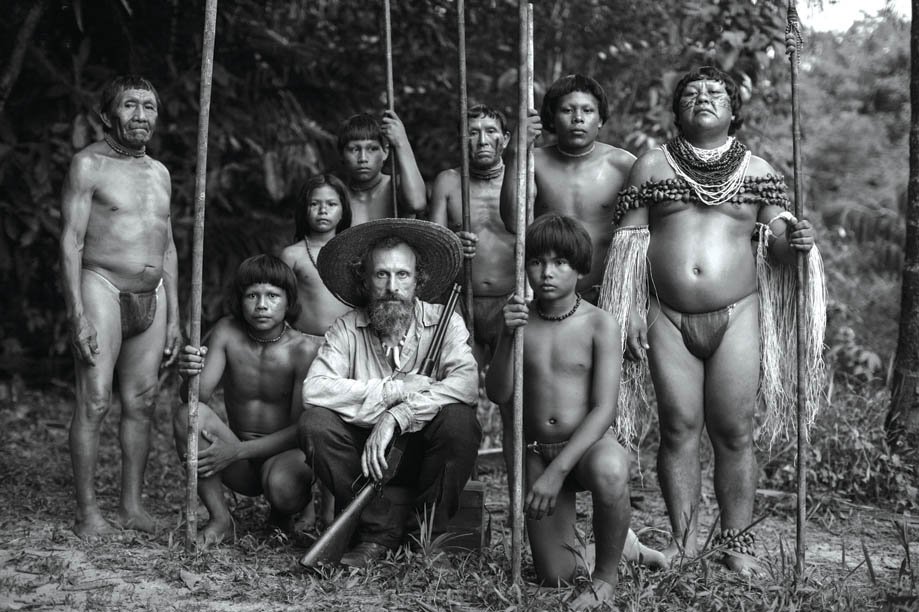
Alejandro García: The Artist-Bird
By: Sol Astrid Giraldo E.
Alejandro García (Colombia, 1983) is a man of the abyss: the abyss that stretches between Andean peaks, where he chases after birds, the abyss of the blank page under his hand, the deep and inscrutable abyss that is his mind. Voids tempt him again and again. And when he falls, he clings to his pencil lines, the charcoal stretching across the abyss to create a surface for his mysterious and ever-changing universes.
In this third millennium, when artistic paths have broken away from figuration, academia, and traditional languages, Garcia swims against the tide and employs the ancient technique of etching. He returns to the millenary practice, employed since the time of the Altamira caves, of imprinting in ink to remake the world. He needs nothing more, no avant-garde technology, special effects, or aesthetic theories, because to conquer the abyss you must tread lightly. Garcia needs only his eyes, his hands, his imagination, and a black pencil and white paper, upon which, like prehistoric man, he creates a different order. His desire is to reconnect with nature and suture the wounds that Western culture has inflicted upon her.
Moor. Digital collage made from drawings and objects found by the artist (2018).
“In school,” he says, “we learn to classify nature in different kingdoms, groups, classes, etc., but I’ve always wondered about the real limits of things, and whether nature establishes the same limits that we do. If the tree knew it was a tree, would it say it consisted of just leaves, branches, a trunk, and roots? Or would the tree, perhaps, say that the bird that nests in its branches and pollinates its flowers is also part of it, just like the water consumed by its roots and the wind that shakes it?”
His drawings, then, are an attempt to reunite fragments, to restore the links that sciences such as anatomy and botany have destroyed. He does not represent a man, an animal, a river, each in a separate compartment. In Alejandro García’s work, the traditional landscape gives way to man-birds, sky-seas, feathered trees, planet-eggs, horses made of branches in the wind, and mountains swollen with watery veins, all in an uninterrupted chain of metamorphosis. Man and animal are no longer placed in a landscape. Now, each is itself jungle, leaf storm, and cosmos, as in mythology.
River Series. Graphite pencil, colored pencils, and watercolors on paper (2017).
And García has his own mythology, in which the bird is king. As an admirer of the cordilleras of Colombia, he has flushed them out obsessively, reverently. He is intrigued by their freedom, their silence, their forms. The movement of his pencil trails along their nests, which are also lines; their tracks, which are also marks; and their feathers, which are also fabrics (because the bird is also a draftsman). He has composed operas with birdsong (Método para ser un ave / Method to Be a Bird, El misterio del sueño de las aves / The Mystery of the Bird’s Dream).
He has circumscribed his own works in the shape of an egg, as a metaphor for creation, the alchemical process that allows something to emerge from nothing.
And in a supreme act of provocation, he created his splendid bird-woman. The leafy feathers of the lower portion of La cantante (The Singer) are cinched into a narrow waist out of which the torso of this woman with theatrical hands and a powerful bird head emerges. And in this imagined anatomy, a clash occurs between the civilized body and the savage, indomitable animal. It is gently resolved through poetry. Both soprano and bird, she proudly raises her beak, opens it, and a song of nature explodes before the eyes of the spectator. Nineteenth century laws of anatomy and classification collapse in the wake of this new goddess and her monstrous, unclassifiable beauty. A (bird size) drawing, measuring a mere twenty centimeters, which makes all categories of thought tremble.
Untitled. Graphite pencil on paper (2013).
A traveler through forms, in series such as “Imaginary Anatomies,” “Still Life with Symbol in Background,” “Páramo,” and “Fluvial,” this artist and illustrator seeks unity in a time lost inside the pigeonholes of practical reason, separated from nature and the earth. His strategy for this colossal task is creation, in the broadest sense of the word. García, Draftsman-Bird.






